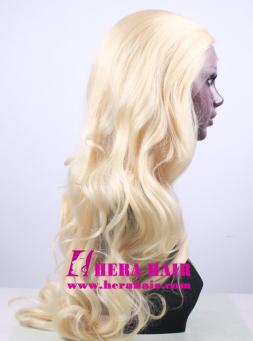What to do about thinning hair?
Why you're losing your hair—and how to treat it.
Your hair is an important part of your self-image, and if you start to lose it—as up to 60% of us eventually do—the loss can be devastating. Throughout our lives we regularly shed 50 to 100 strands a day, but that process accelerates as we get older. Our hair also regrows at a slower pace than it once did, so we can't fill in thinning spots as easily.
Age-related hair loss is different from female-pattern hair loss, but the two conditions often coexist, says Dr. Deborah Scott, co-director of the Hair Loss Clinic at Brigham and Women's Hospital and assistant professor in dermatology at Harvard Medical School. Female-pattern hair loss—like its male-pattern counterpart—occurs mainly in the front of the scalp. Age-related hair loss, by contrast, is a general shedding of hair throughout the scalp. "It's just a slow, gradual thinning without increased shedding. You look up one day and you say, ‘Where did my hair go?'" Dr. Scott says.
Hair loss can also occur with health conditions, including autoimmune diseases like lupus, and thyroid problems. "Anything that stresses your body can make you lose hair, but that's a different type of hair loss—it's a temporary hair loss," Dr. Scott says. Similarly, years of perming, coloring, blow drying, and chemically straightening can weaken the hair's structure, leading to breakage and thinning.
Getting help for hair loss
"If you are losing your hair and you are concerned, see a doctor or specialist who can help you figure out what's going on," says Dr. Scott. Your doctor will treat conditions that might be the cause of hair loss, such as thyroid or autoimmune disease. Therapies are also available for age-related or female-pattern hair loss; however, they aren't cures—they can only help restore some of the hair you've lost.
The only FDA-approved treatment for female-pattern hair loss is minoxidil (Rogaine), a cream or foam that you rub directly on your scalp. Available without a prescription, minoxidil can slow the rate of hair loss, and it can even regrow some hair, but it also can cause side effects like skin irritation and unwanted hair growth near the area where it's applied (such as on the forehead).
Finasteride (Propecia), an oral medication, is only approved to treat hair loss in men, but some doctors are using it off-label for women who haven't responded to minoxidil. In studies of women, finasteride wasn't effective in the 1-milligram (mg) dose used in men, but higher doses—2.5 or 5 mg—did seem to help promote hair growth.
However, this drug can cause more severe side effects, including decreased sex drive, depression, and a few cases of breast cancer in men, which should make women pause before using it. "I would be very careful about giving finasteride to a woman, especially if she has a history of breast cancer," Dr. Scott says.
More options for hair loss
Various techniques are promoted for restoring thinning hair. Some work better than others. Dietary supplements containing ingredients like biotin are marketed for hair loss, although there isn't much evidence behind them.
"There aren't a lot of firm, medically sound studies to support taking these supplements, but they're harmless," Dr. Scott says. If you want to try taking biotin, it probably won't hurt. For hair loss, biotin is sold in doses of 2 to 10 mg. Because certain nutrient deficiencies, particularly iron, can worsen hair loss, it's worth getting checked out by your doctor. Diagnosed deficiencies can be easily treated.
Women, like men, might improve their appearance with hair transplants. However, if hair loss is diffuse throughout your scalp, you may not be a good candidate for one of these procedures. A better option may be to camouflage your hair loss with creative styling techniques, along with products like sprays and powders that give the appearance of thicker hair. If the hair loss is extensive, you can get a hairpiece or lace wig in your hair color and style to disguise the missing sections. Today's wigs look more like real hair than they used to.
Dealing with the emotional loss
Losing your hair isn't just a physical affliction. It affects your self-perception and self-esteem, too. "It takes a while for people to come to grips with the fact that we can't cure hair loss," Dr. Scott says. "If it's really difficult for them, I will often recommend that they get counseling."
Talk to your therapist, your doctor, and a hair stylist to find solutions that help you feel more like your former self. "You can do things about hair loss, but you have to embrace the situation and say, ‘I'm losing my hair and I'm going to try to do whatever I can to stabilize it or improve it,'" Dr. Scott says.
Hera can custom perfect lace wigs for your choice and we also supply cheaper synthetic lace front wigs.









